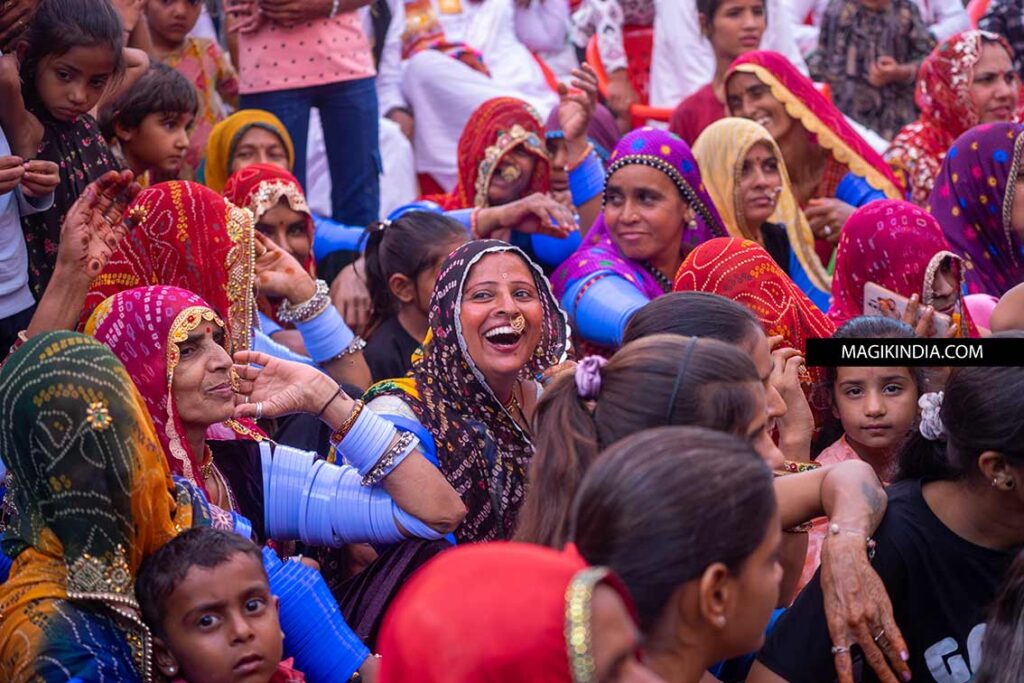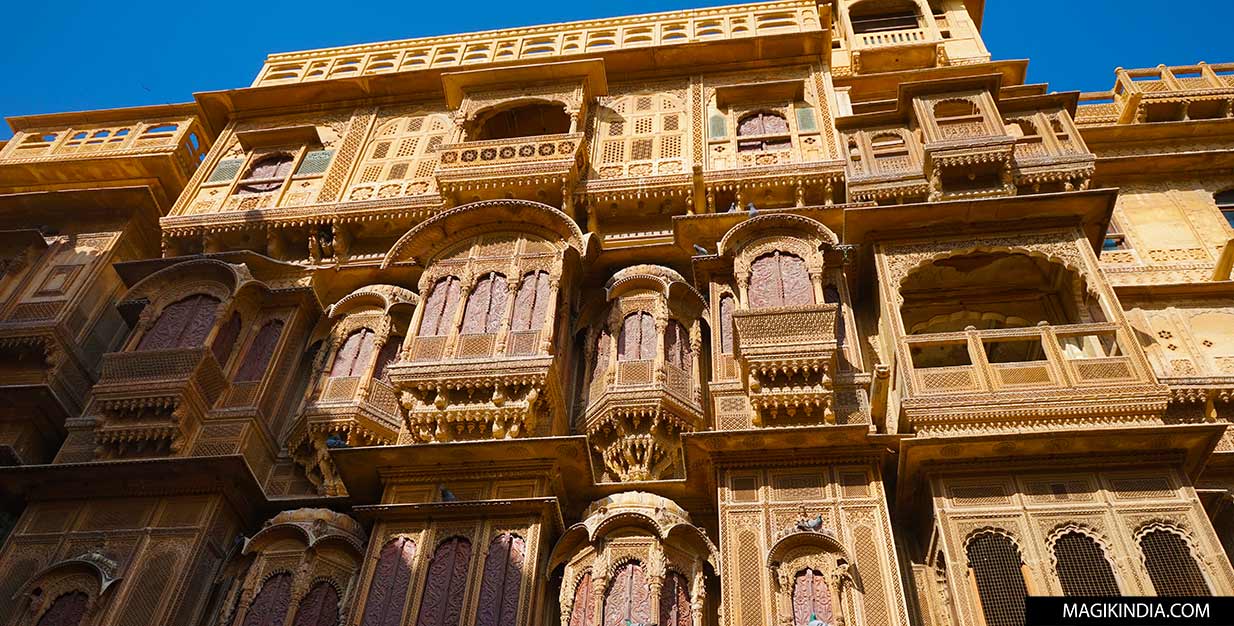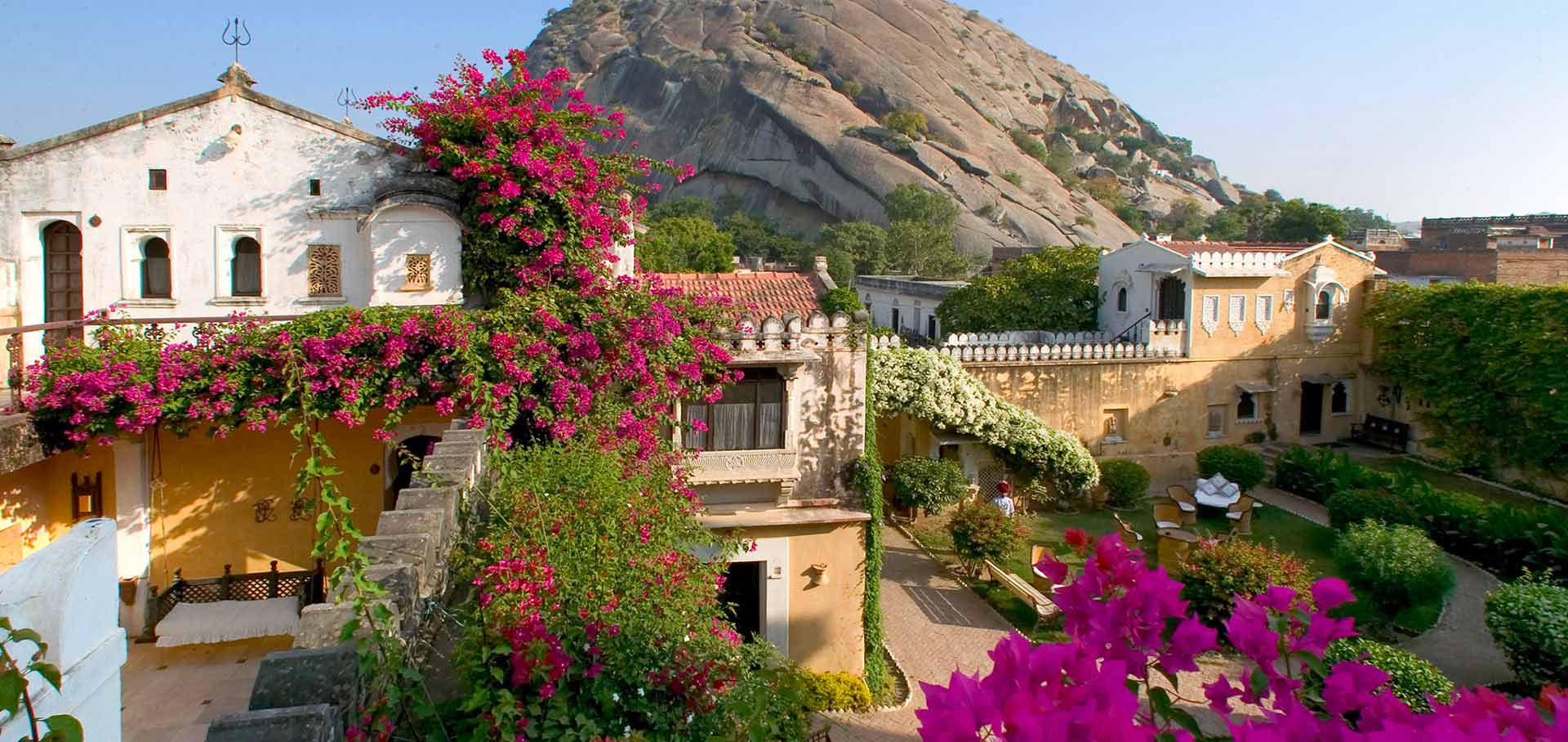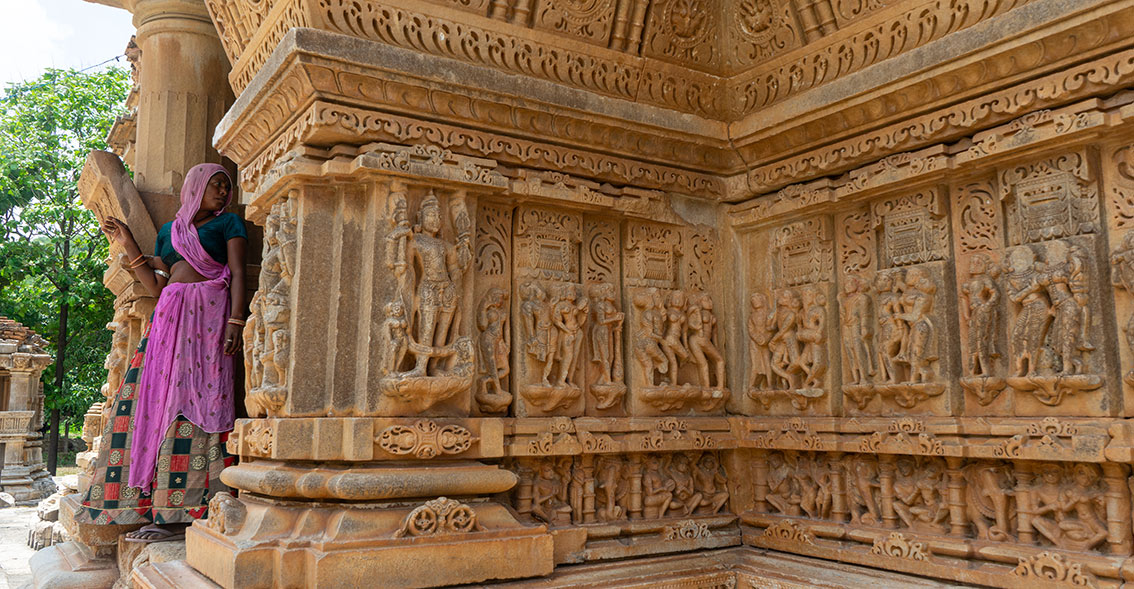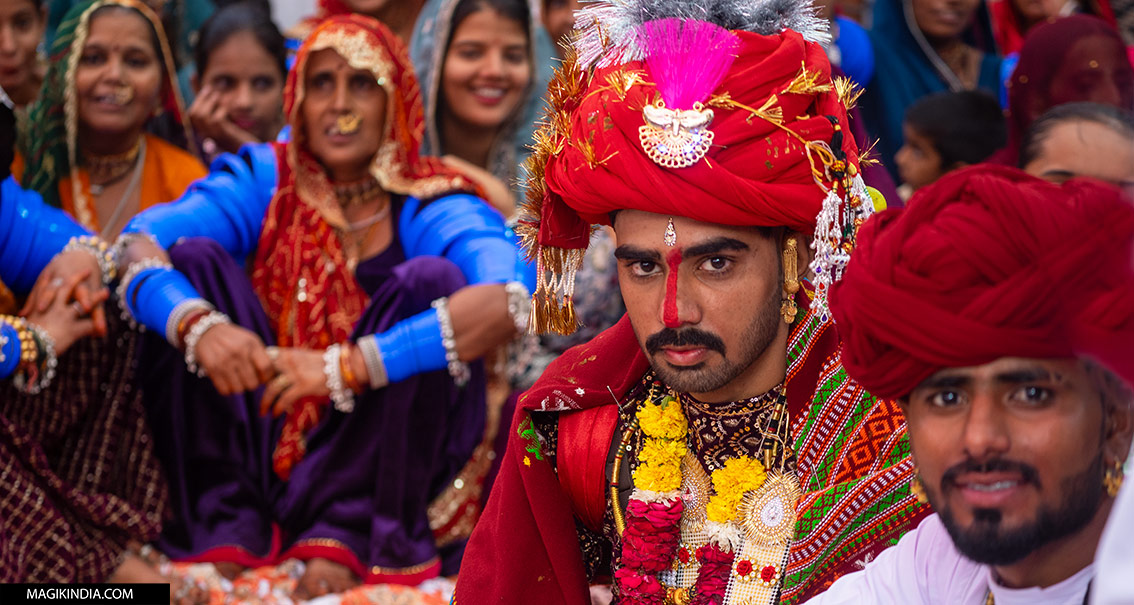
The wedding ceremonies of the Rabari Raika
The last time I attended a Rabari ceremony was with the Vagadiya of Kutch, Gujarat. The atmosphere of their rituals was so immersive that it made me feel as if I were traveling to another space and time. The Raika of Rajasthan share this same art of ceremony. We find there this force of attraction that plunges us into the heart of an ancestral narrative, forging a powerful connection with the deep identity of this unique community.
The phone rings, and it’s my friend Rabari Magan inviting me to one of his friends’ weddings. I don’t hesitate, and here I am on the road, heading for Ranakpur, two hours from Udaipur. This region is known for its remarkable Jain derasar and also for being the stronghold of the Rabari Raika pastoral community.
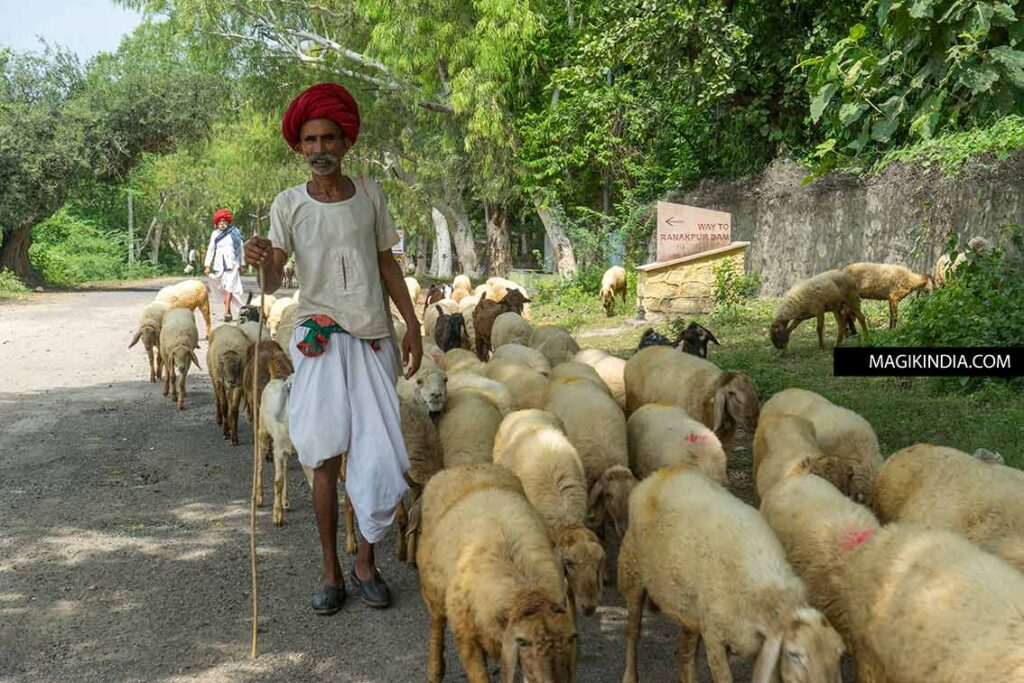
An invitation to a Rabari wedding is a rare favor, a precious honor that cannot be declined. Many families refuse the presence of outsiders. The episode in Kutch, where my guide forgot to report my arrival, left a bitter taste in my mouth.
I am invited to the crucial stage of the Raika wedding: the “phera”, the sacred ceremony that formalises the couple’s union.
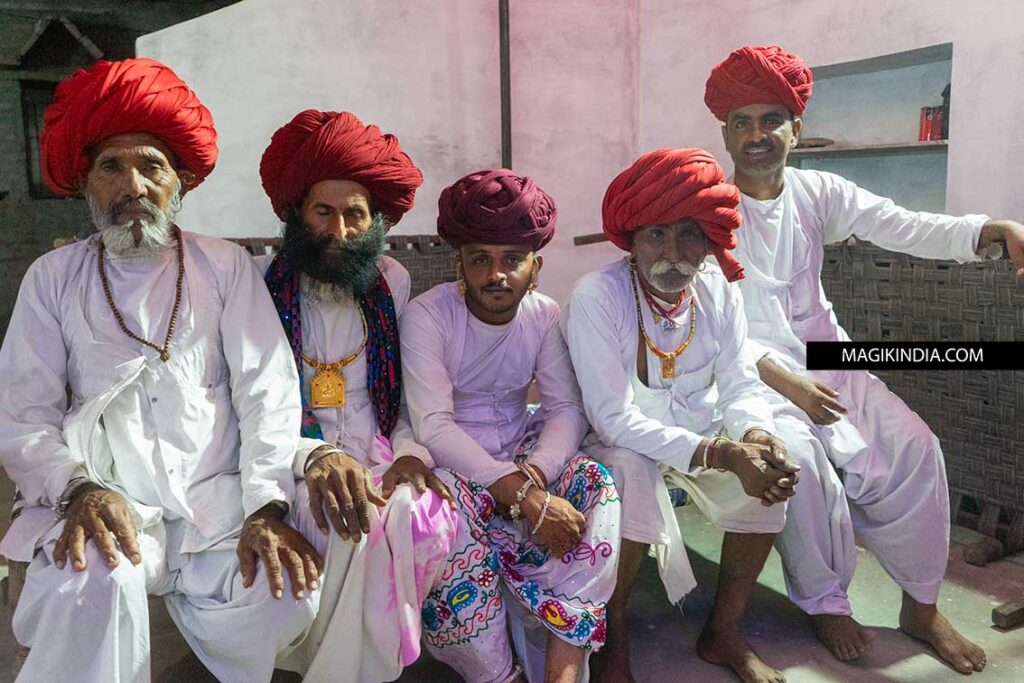
After meeting Magan in Ranakpur, we set off on a short, hour-long drive to a charming village nestled in the Jawai region to introduce myself to some of the family; the goal is to avoid arriving at the next day’s festivities as a complete stranger.

The family members, dressed in their traditional Raika costumes, welcome me warmly. They seem delighted that I am interested in their culture.
The next day, the festivities begin early. By 5 a.m., I’m in the starting blocks, ready for a new experience in Rabari land.
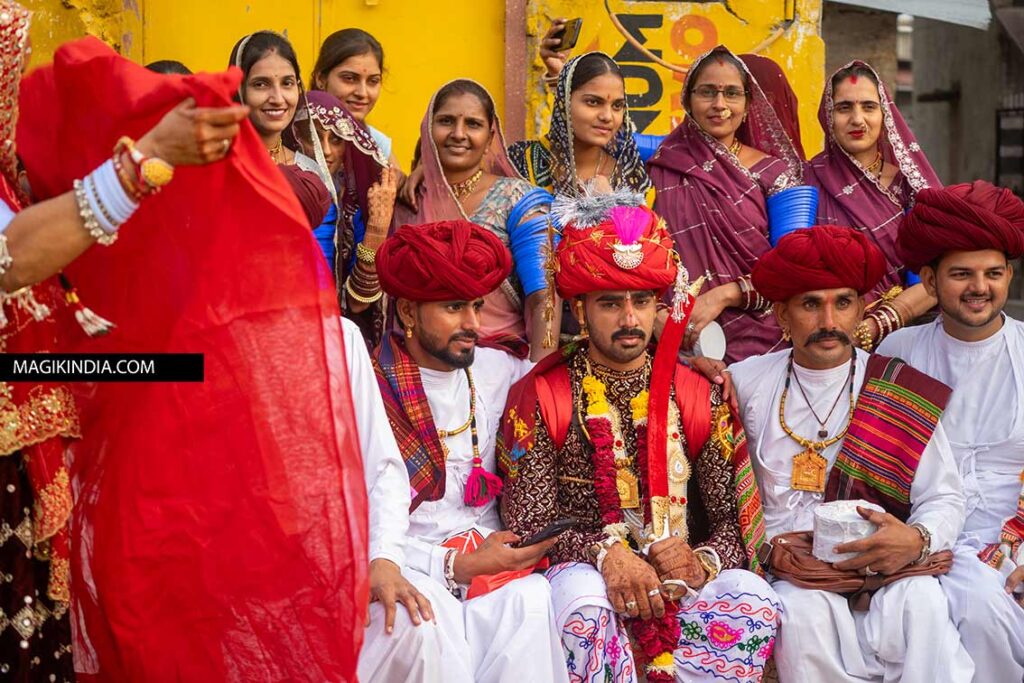
Around 6 a.m., a joyful buzz reaches the front of the groom’s house. Soon, the groom-to-be drives up and sits on a bench surrounded by his close entourage of best friends, the true pillars of this special day.

The groom radiates in his richly embroidered doti, accented by a jacket with shimmering gold thread. His appearance is regal with a sword in his hand and a red turban illuminated by flashing LEDs. A unique silver jewel hangs from the side of the turban; it appears to be an arm bracelet worn by Rabari women.

Then, according to tradition, the guests file past the groom to offer their wishes. This moment of congratulation, essential in Indian wedding celebrations, allows everyone to express their joy and support for the new couple.
Among the Rabari, respect and affection are expressed by kissing the right hand, a custom observed by both men and women. Unlike common Indian tradition, they do not practice touching the feet as a sign of deference.
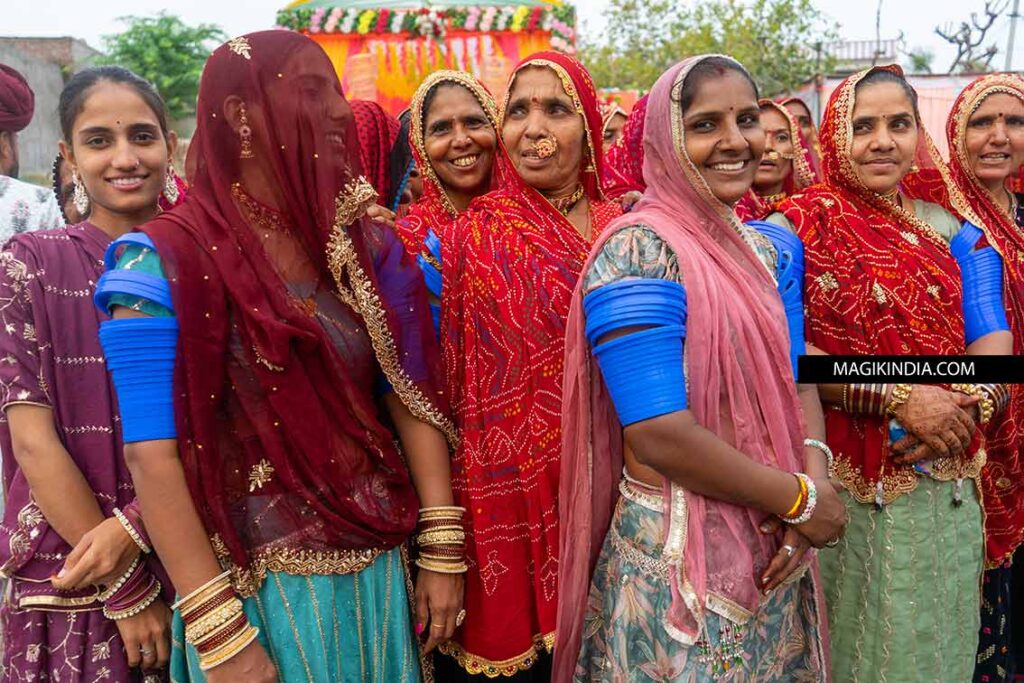
As the guests file in, a lively melody rises, carried by the women’s voices. They fervently sing traditional wedding songs in Marwari, the vibrant language of this region of Rajasthan.
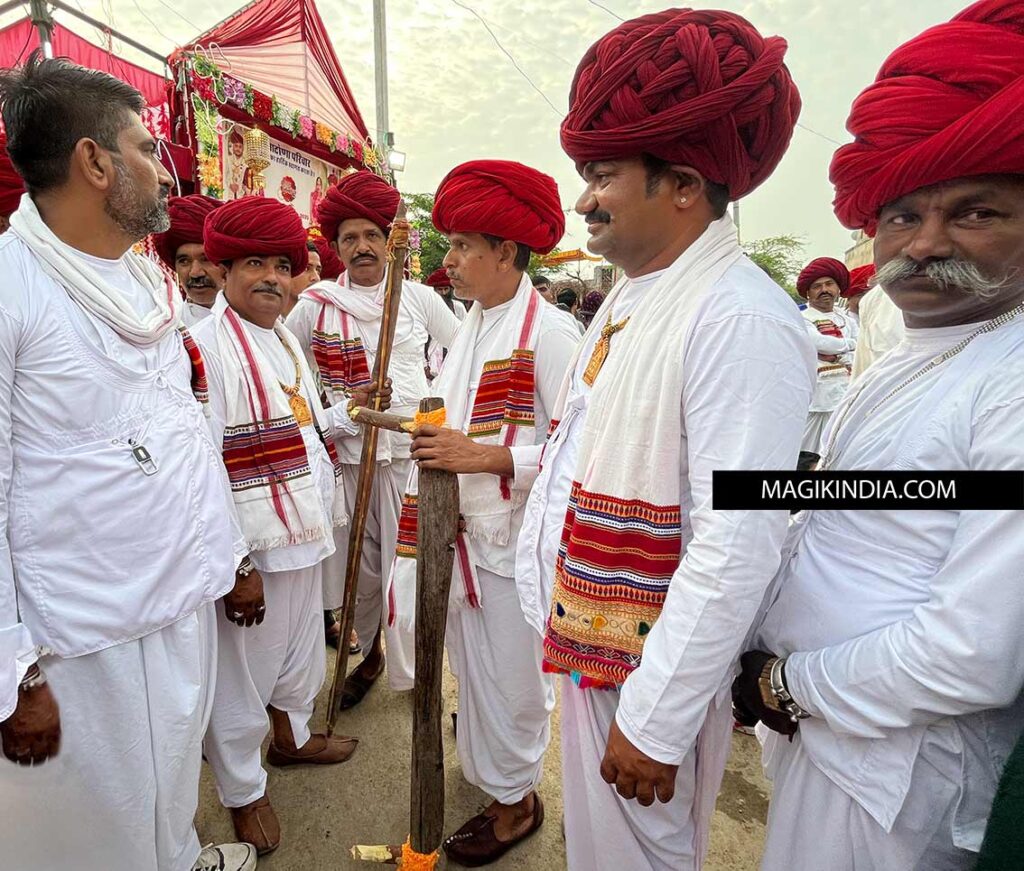
After about an hour, it’s time for the groom to enter his house. But before that, the traditional “toran” ceremony must be performed. Rabari requires this ritual to be performed on the back of a dromedary, not on horseback. The groom then uses his sword and a churn to touch the toran.
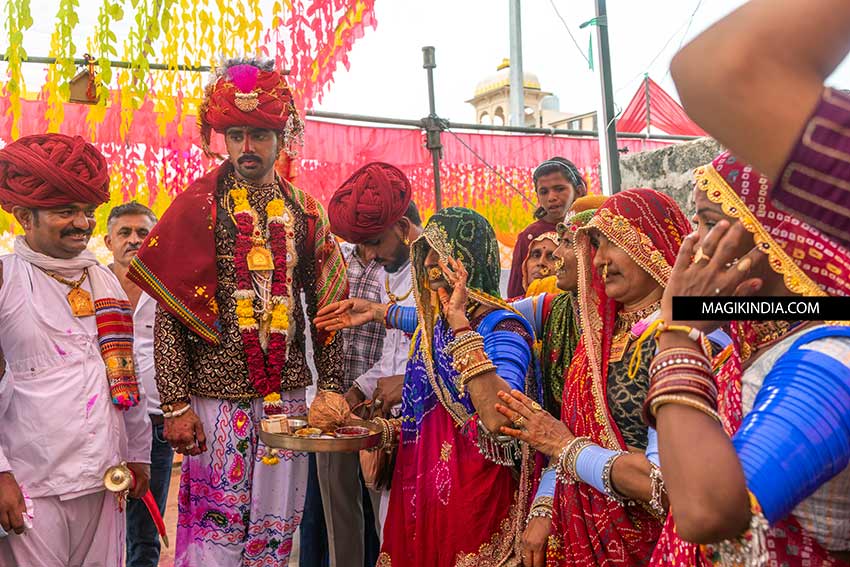
While I was still absorbed in the toran ceremony, some Rabari women pulled me by the arm and quickly led me to the back of the house. There, a narrow door led us to the main entrance. This swift action allowed me to arrive in time for the next ceremony, which I regretted having missed.
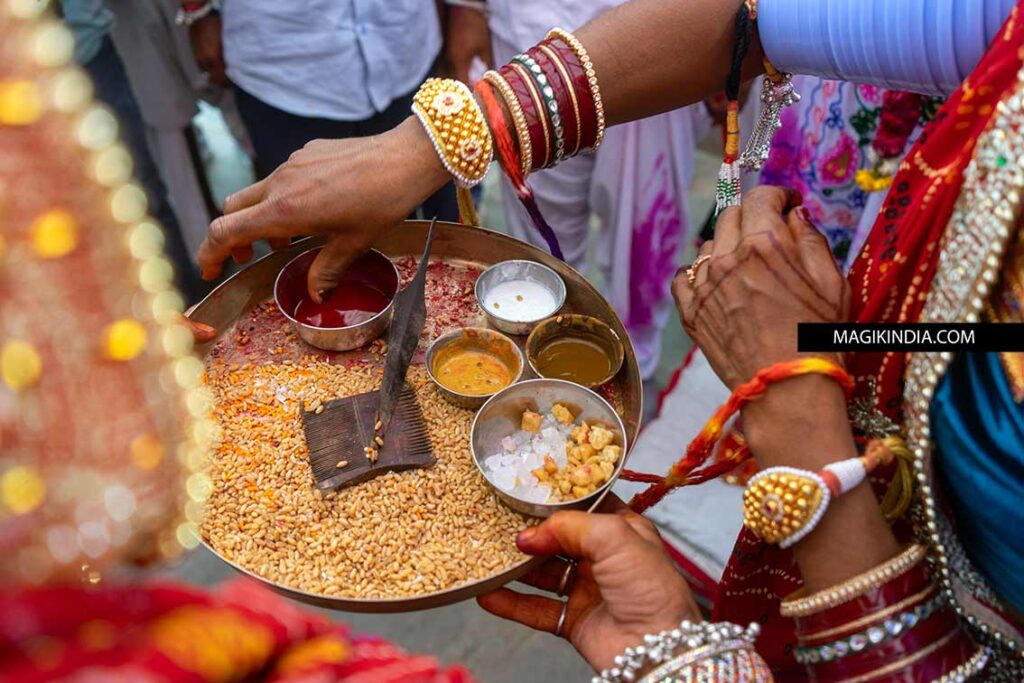
I find the groom standing at a small table transformed into a sacred pedestal. Around him, the important women of his family hold a tray laden with auspicious symbols. In bowls resting on a bed of wheat grains, a promise of fertility and abundance, are ingredients with profound meanings: kumkum, a red powder synonymous with luck and prosperity; natural brown sugar and candy sugar, offered to nourish and sweeten the groom’s future; turmeric, with its purifying properties and a guarantee of good health; and finally, henna for protection and curd for purity.

So far, nothing new, but two other objects on the tray catch my eye: a lice comb and an arrowhead! The women of the immediate family take turns using them to bless the future groom, a gesture intended to ward off the evil eye, I’m told. However, the precise reason for choosing these two objects remains obscure, yet another closely guarded secret of Indian rituals.
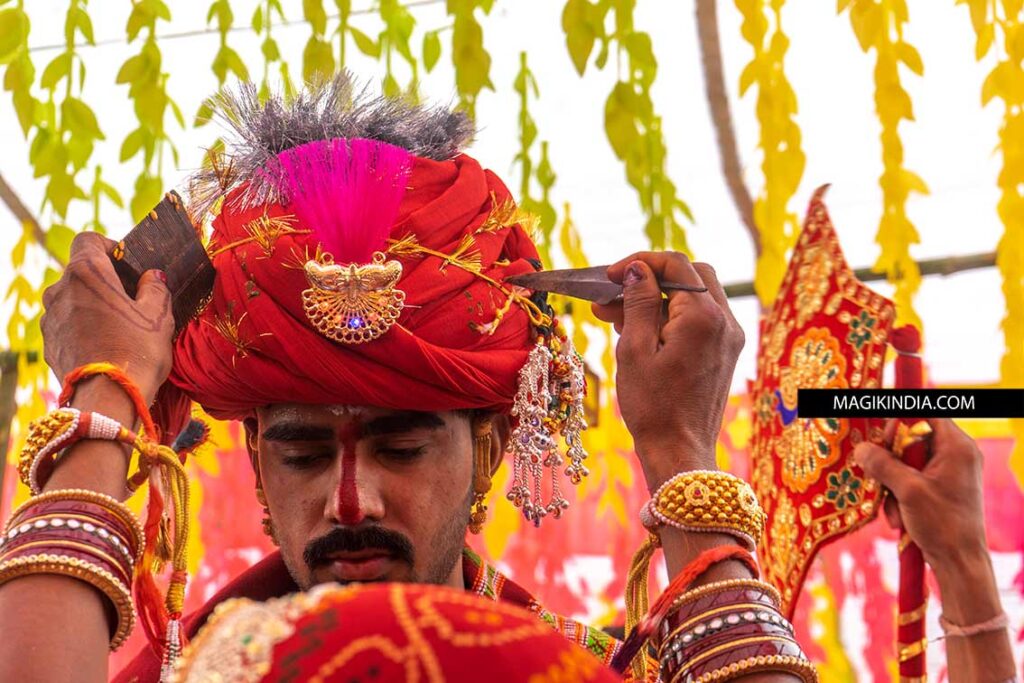
After this ritual, the women grab the churn and the yoke, covered with a red cloth at the ends, and strike the ground on either side of the groom in order, again, to ward off evil spirits.
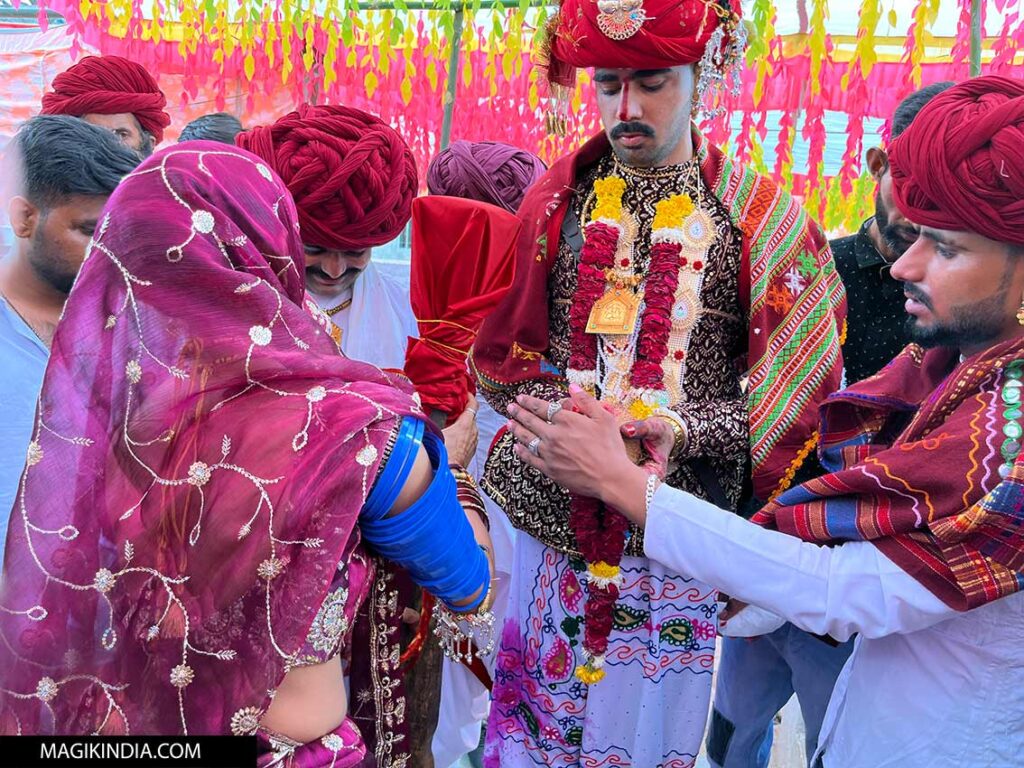
Once these rites are completed, the groom goes and sits under the mandap, the sacred structure where the culminating ceremony of the “phera” will take place, an essential moment common to all Hindu weddings.
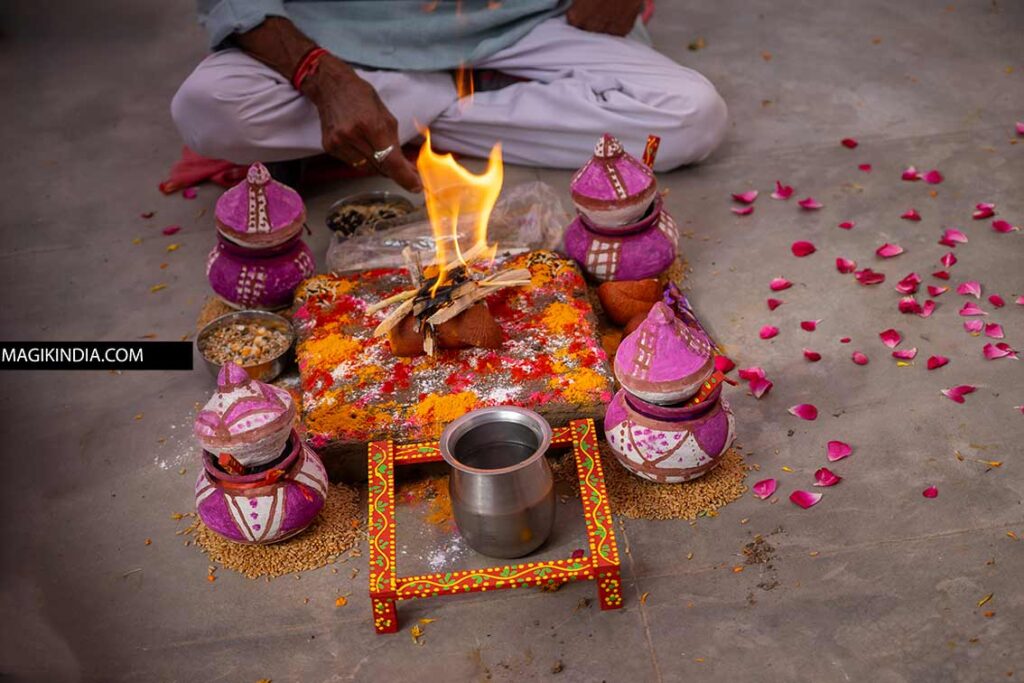
About thirty minutes after the groom has taken his place under the mandap, the raika bride makes her entrance. Like the Rabari women of Kutch, her face is entirely concealed under a red bhandani odhani, a traditional veil with its distinctive knotted patterns. Their first official interaction takes place with the exchange of garlands of fresh flowers, the jaimala, a symbolic gesture of mutual acceptance. Immediately afterward, the priest performs the Granthi Bandhan, a sacred knot joining the bride’s chunni (veil) to the groom’s dupatta (shawl), thus sealing their eternal union before gods and men.
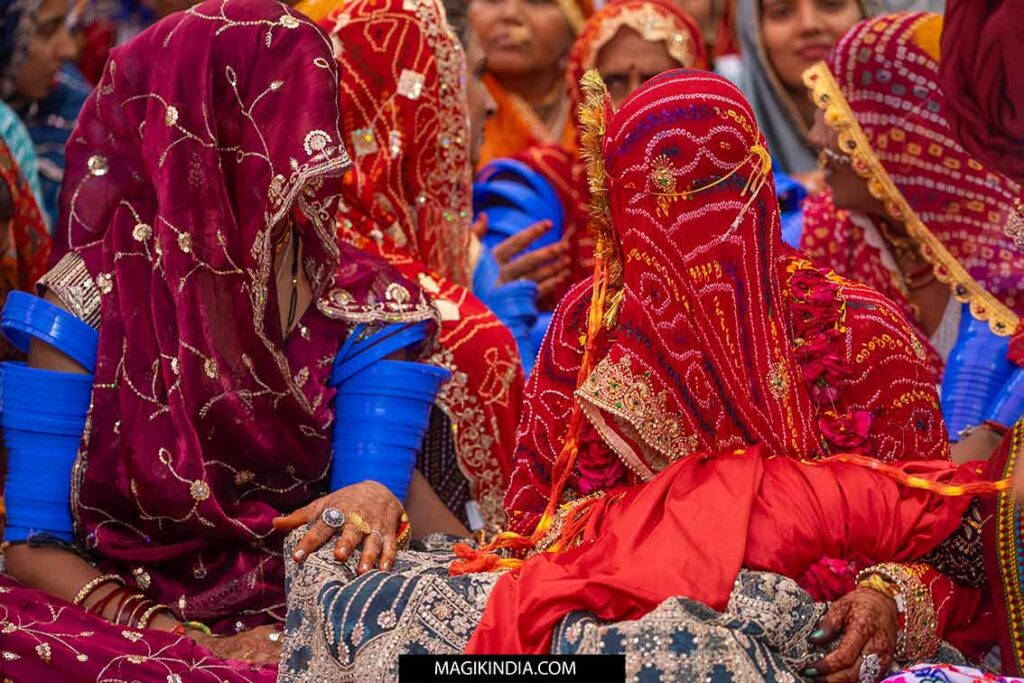

After performing various sacred rites, the couple, now physically united by the chunni, begin the seven ritual circumambulations around the sacred fire. During this crucial moment, the priest’s Vedic mantras resonate, guiding their steps and blessing their spiritual union.
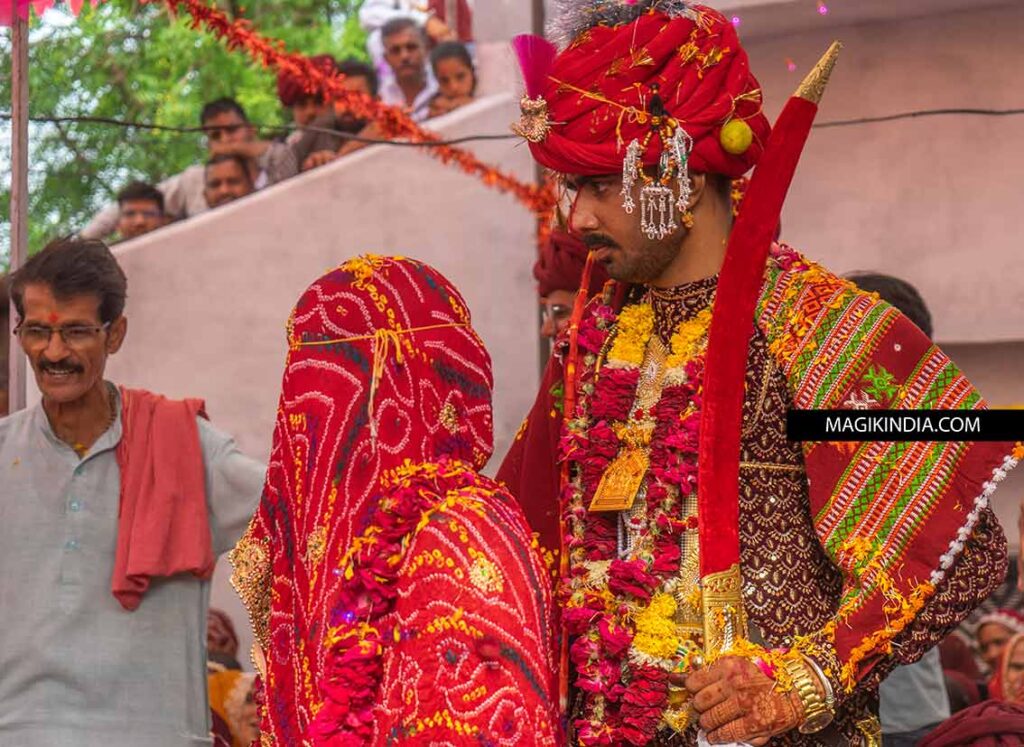
At the end of the third tour, I bid farewell to my hosts and thank them for this privileged window into their culture. Another magnificent experience on “MAGIK INDIA”!
